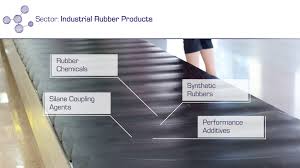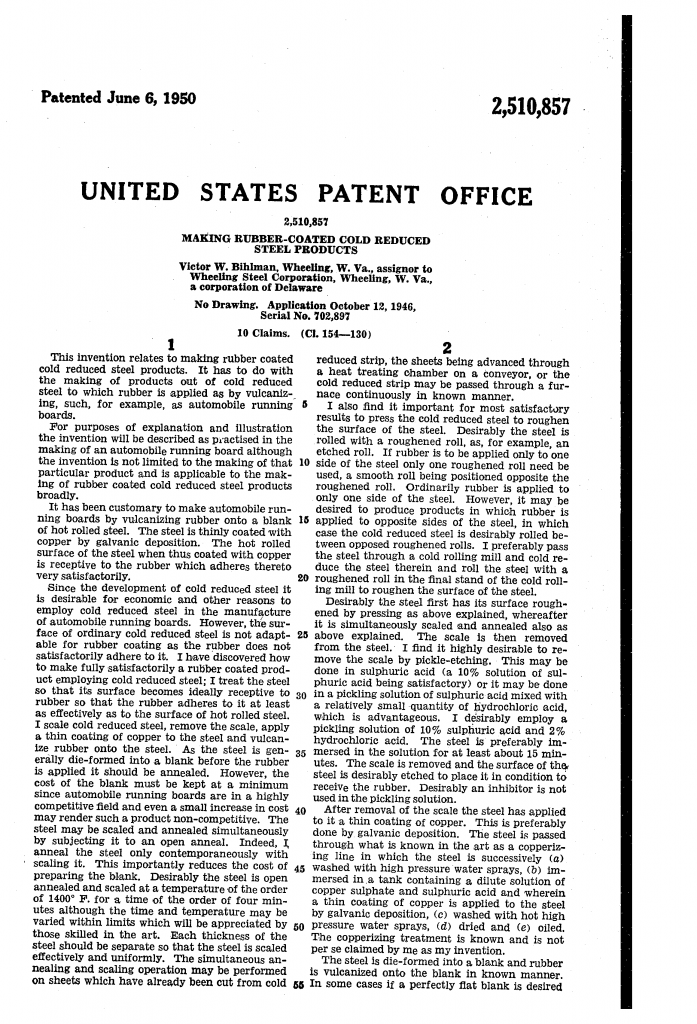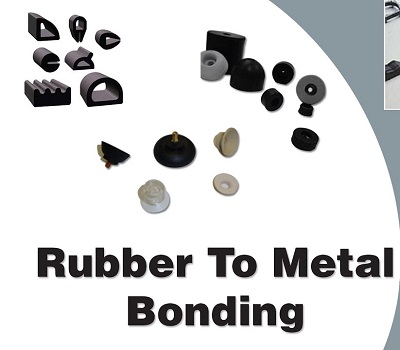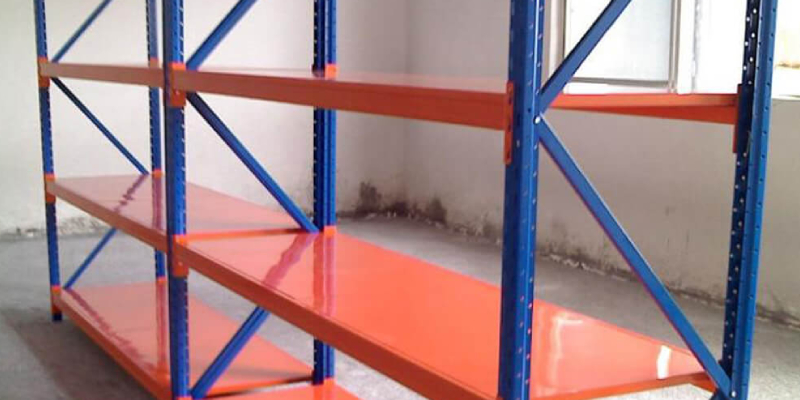Bonding Rubber With Steels & A Patent requirements

THE IMPORTANCE OF ‘O’ RINGS
April 30, 2018
Uses, Properties, and Types of Rubber
June 30, 2019The Many Applications Of Rubber And Metal Bonded Products
Stainless Steel product manufactures of ages ago realised that bonding metal to rubber often creates parts that are too complex to make otherwise. Rubber to metal bonding helps build small and big pieces that are employed in a plethora of segments because of their various applications. Brooklynz Stainless Steel says these that metal and rubber products can be used in:
- Aerospace sector
- Automotive industry
- Construction and manufacturing business
- Electrical fields
- industrial machinery
- medical sector
- plumbing business
Rubber rolling and vibration absorbers are just two examples of their use. Some other products produced through the rubber-metal bonding process are:
- seals
- gaskets
- pad surfaces
- pedals
- bearings
For instance, in the aerospace world, rubber and metal bonding is used for the installation of steering wheels and engine mounts. In the medical industry, it is seen in surgical instruments. In electrical fields, cables, plugs and tanks are lined with rubber. The applications are numerous since the bonding:
- dampens vibration
- absorbs shock
- seals completely
- dissipates friction
- isolates noise
- offers comfort grip
The Material Used In Rubber And Metal Bonding.

The process of bonding rubber to metal uses three chief materials:
- The Metal Substrate:
High pressure and high are the two attributes a metal substrate necessarily has to bond with rubber. That said, just because an alloy can bond with rubber, it doesn’t guarantee an excellent end product. The composition of the alloy factors a lot. The most common metals employed for bonding are:
- Aluminium
- Steel: Weldability, durability, ductility and tensile strength make it widespread.
- Brass: Barring the low melting point that doesn’t help them in high temperatures, brass alloys are common because they are lightweight, antimicrobial, attractive and non-sparking.
- Beryllium: Ductility, stability, non-corrosive, electrical conductivity and low creep are some reasons this alloy of copper is attractive for bonding.
- Copper: Non-magnetic, antimicrobial, malleable, soft, ductile, electrically and thermally conductive are attributes that make it standard for rubber bonding.
Aluminium is the most popular of all metal alloys because it is:
- Very economical
- Lighter than steel
- Doesn’t lessen seal strength
- Doesn’t hamper the quality of the bonding
Some other materials which may be used are:
- Fabric
- Glass
- A type of plastic
- The Bonding Agent
When the bonding process was first discovered, the agent used was solvent based. Later on, a water-based agent was found because they are far more environmentally friendly. Today, most metal and rubber bonded product manufacturers use only water-based agents. They are just as durable and offer as good a seal as a solvent agent. To know more about, read here.
A bonding agent is a solution that is coated with a primer made of phenolic-style resins. Over this, a coat of another material is applied. The topcoat can also be a polymer. The bonding agent solutions are patented but available for purchase.
- The Rubber Material
A rubber or an elastomer can be utilised. The only condition is that it should be able to flow into a mould without creating crosslinking.
The reason rubber and metal bonding is valued so highly are many. E.g.,
- It generates the most reliable adhesive link possible.
- The bonding is versatile, which signifies manufacturers can mould the rubber to the metal alloy in any design.
- The bonding can withstand a range of temperatures because the type of rubber utilised can differ easily, which means temperature variety can vary.
- The bonding process is eco-friendly as compared to other similar methods because there is no lead and water-based bonding agent are green.
These benefits are also the reason why Patents are awarded to rubber to metal bonding processes so often. One such example is given below.
A Patent For An Adhesive Composition & Rubber To Metals Bonding Process

The invention patents a composition of a new adhesive perfect for bonding a metal alloy (can be steel) to rubber such as vulcanised neoprene. The adhesive used can be cured at room temperature and yet provide a strong joint at the metal to rubber interface, which gives the necessary amalgamated structure. The adhesive composition consists of:
- A primer which is applied on the surface of the metal. It is based on the composition similar to the nitrile-phenolic adhesive.
- An overcoat which is used on the surface of the primed alloy to act as an adhesive to the rubber. It is based on the composition similar to neoprene-phenolic adhesive
The patent claims the composition of each of it and it explains the preparation required for the phenolic resins. Moreover, the patent also covers the blending process needed for the metal and rubber bond.
The reason the composition and process were granted a patent, says Vakil Search, was unique from prior arts. The invention creates a novel composition for a rubber to metal adhesive. Furthermore, the bonding procedure it necessitates is also brand new. Two chief benefits the new adhesive tenders are:
- Better adhesive strength
- Higher bonding strength
Both these qualities are more significant than all other adhesive compositions known till the inventions. Also, the attributes hold even under extreme environmental conditions. A few more advantages of the patented adhesive are:
- A higher and improved lap shear
- A greater peel strength
- It can be applied to a plethora of materials be it alloys, metals or rubbers
Tests have proven these pros of the adhesive composition. While the merits of the adhesive are undeniable, the goal behind the invention was to find a composition that was curable at room temperature. Till the creation, vulcanised chloroprene rubber couldn’t be bonded to the steel at room temperature. The adhesive composition achieved this objective.
To sum it up, applied for patent by Indian Space Research Organisation and granted in 2013, the adhesive for metal and rubber bonding can withstand shock, vibration and thermal conditions in the extreme while remaining leak proof!




